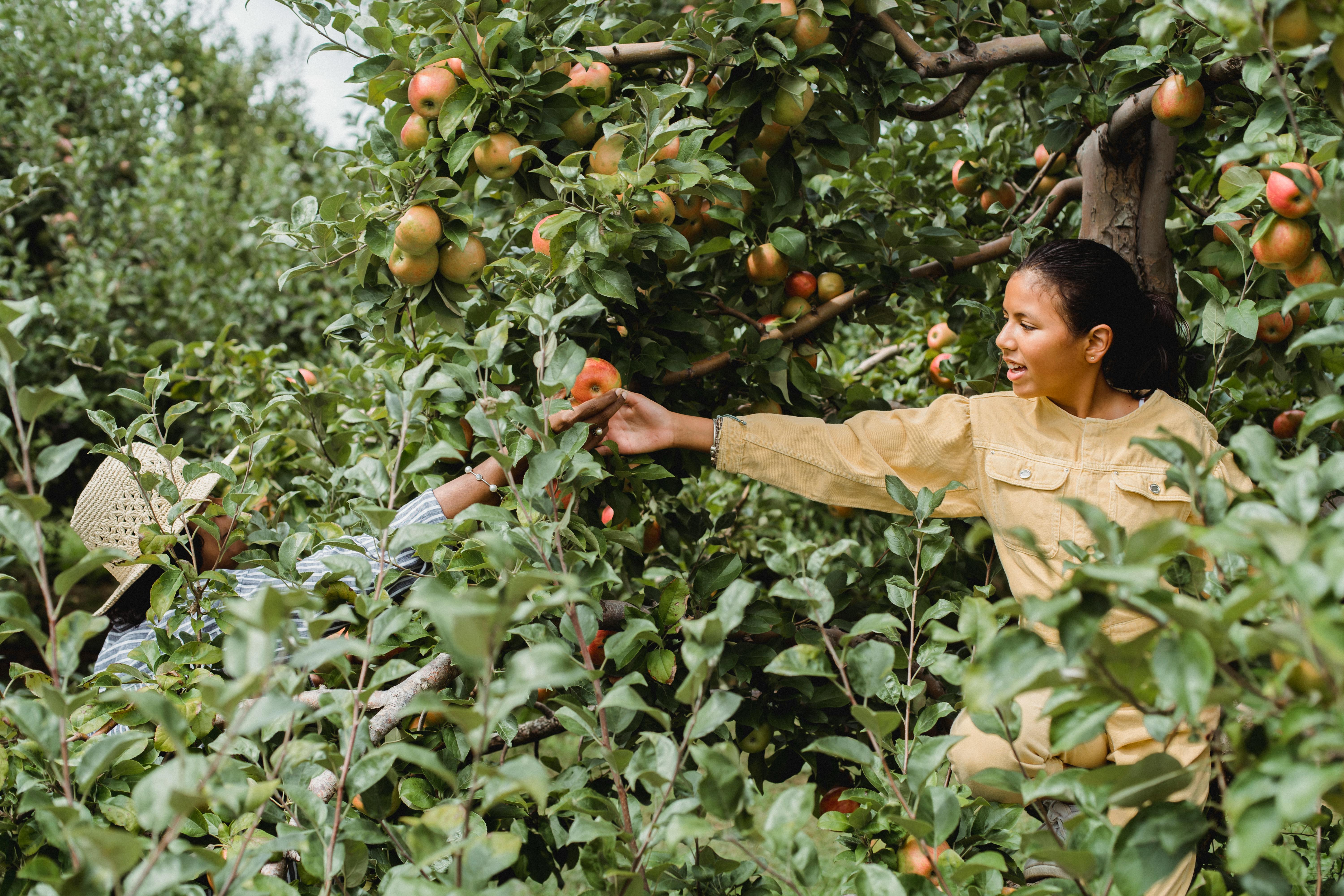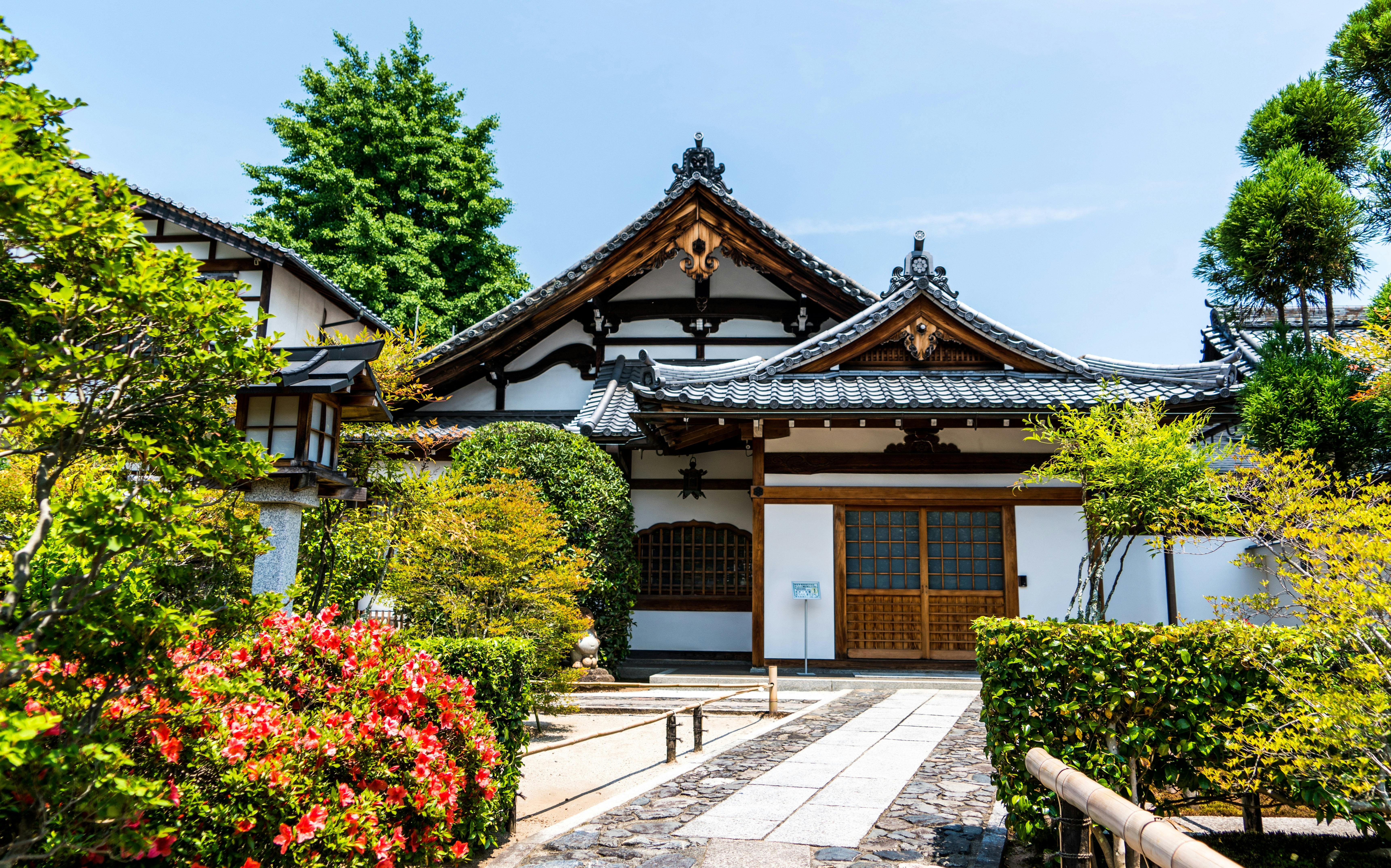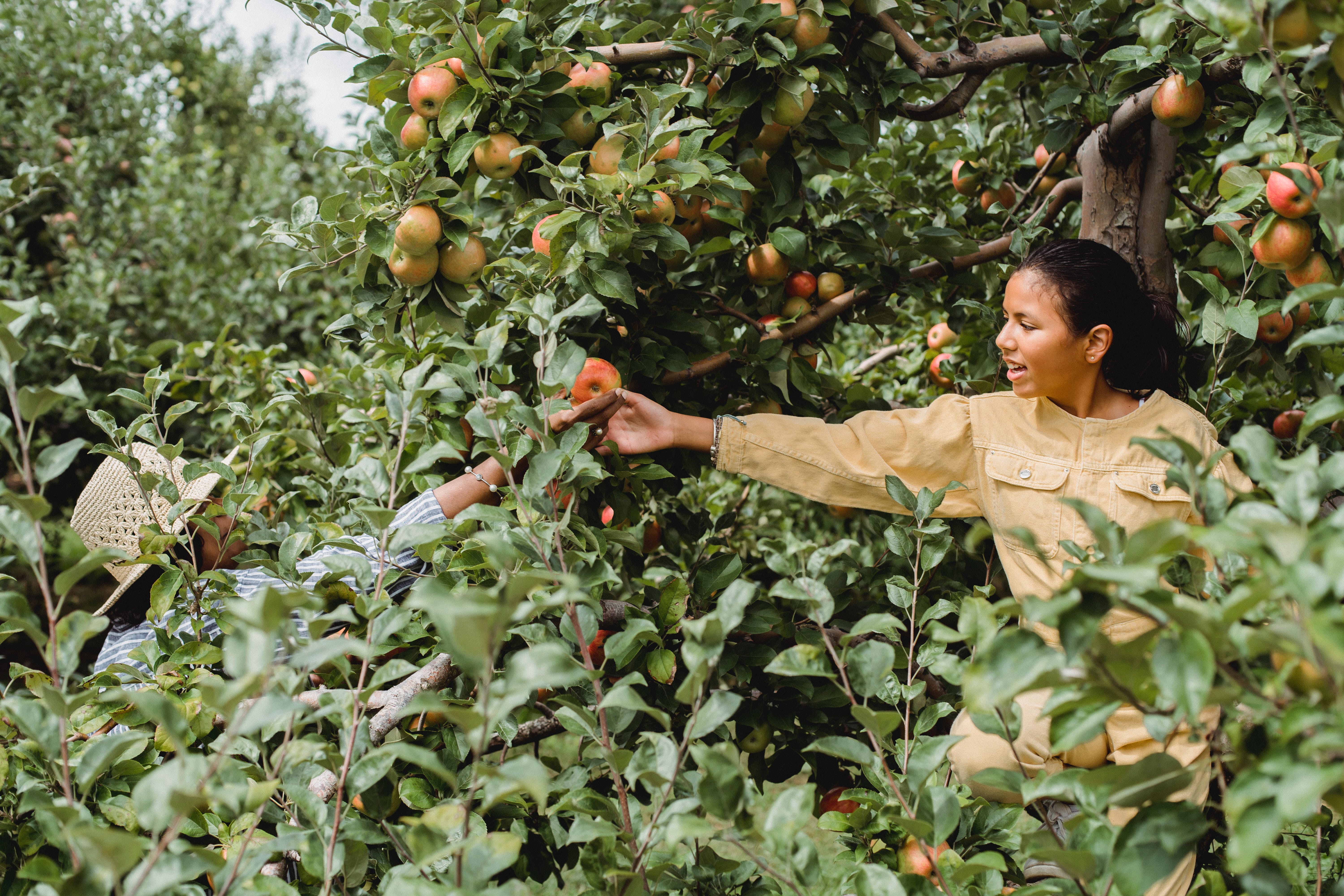Japanese beetles are a common pest of fruit trees. They feed on the foliage, flowers, and fruits of many different types of trees, including apple, cherry, peach, and plum. While these pests can be difficult to control, there are several measures you can take to keep Japanese beetles off fruit trees in your yard. This article will discuss some effective methods for preventing these beetles from damaging your fruit trees.1. Remove any Japanese beetle grubs from the soil around your fruit trees.
2. Plant a trap crop of Japanese beetle favorites, such as morning glory, near your fruit trees to attract away the beetles from your fruit trees.
3. Place barrier bands around the trunks of your fruit trees that can be filled with a chemical or mineral oil to smother any Japanese beetles that land on them.
4. Spray your fruit trees with an insecticidal soap or neem oil to kill any adult Japanese beetles that are already on the tree and prevent new ones from landing on it.
5. Hang yellow sticky traps near the fruit trees to catch Japanese beetles in flight and prevent them from reaching your tree’s leaves, flowers, or fruits.
Identifying Japanese Beetles on Fruit Trees
Japanese beetles are a common pest of many types of fruit trees, including apple, peach, and cherry. These beetles can cause significant damage to the fruit and foliage of the tree. Identifying these pests is essential for effective control.
Japanese beetles are small, metallic-green beetles that measure approximately 1/2 inch in length. They have bronze-colored wings and a row of white tufts along each side of their body. The larvae are small white grubs with brown heads which feed on plant roots in the soil.
The adult Japanese beetle is active during the day and is most often seen on sunny days. The adults typically feed on the leaves and fruits of fruit trees, leaving behind ragged or skeletonized foliage. They also consume flower petals, leaving only the center portions of the flowers intact.
In addition to feeding damage, Japanese beetles may also transmit plant diseases such as bacterial wilt or brown rot. Symptoms of these diseases include wilting or discolored foliage, slowed growth rate and premature defoliation.
In order to successfully control Japanese beetles on fruit trees, it is important to identify them early and take appropriate action. Look for adult Japanese beetles around your fruit trees during the summer months and check for larvae in the soil near the base of the tree in early spring or late fall. If you find evidence of damage to your fruit trees caused by these pests, contact your local extension office for more information about how to control them safely and effectively
Natural Ways to Repel Japanese Beetles From Fruit Trees
Japanese beetles are a major pest for many fruit trees, including apple, pear, and cherry trees. They can cause substantial damage to the foliage and fruit of these trees. Fortunately, there are several natural ways to repel Japanese beetles from fruit trees.
One of the most effective natural methods to repel Japanese beetles from fruit trees is to use floating row covers. These lightweight fabric covers are placed over the tree and can be secured in place with stakes or other supports. The fabric prevents the beetle from reaching the foliage and fruit, thus keeping it safe from damage.
Another natural way to repel Japanese beetles from fruit trees is by planting certain plants near them that have strong scents that deter the beetles. Plants such as garlic, chives, leeks, and onions have strong odors that can help keep Japanese beetles away. Planting these types of plants near your fruit trees can help reduce the number of Japanese beetles that feed on them.
In addition, companion planting with certain flowers can also help keep Japanese beetles away from your fruit trees. Flowers such as marigolds, cosmos, zinnias, petunias, and chrysanthemums produce strong scents that help repel Japanese beetles. Planting these flowers around your fruit trees can also act as a natural deterrent for other pests such as aphids and caterpillars.
Finally, another natural way to repel Japanese beetles from fruit trees is by using certain types of oils or soaps on the foliage of your tree. Oils such as neem oil or insecticidal soap sprays can be used to coat the leaves of your tree in order to create an unpleasant taste for any hungry beetle that may try and feed on them. Be sure to follow all safety instructions when using these types of products on your tree’s foliage in order to prevent any damage or harm caused by overuse or misuse of these products.
Setting Up Traps to Catch Japanese Beetles on Fruit Trees
Japanese beetles are a common pest of fruit trees, and can cause significant damage to the foliage, flowers, and fruit of these trees. The best way to keep these pests under control is to set up traps around the tree. Traps can be effective in reducing the population of Japanese beetles in an area, but they must be used correctly in order to be effective. Here are some tips for setting up traps to catch Japanese beetles on your fruit trees.
The first step is to choose an appropriate trap. There are several types of traps available, including pheromone traps, sticky traps, and “beatle bags” that use a combination of pheromones and sticky surfaces. Pheromone traps lure beetles with the scent of their own kind, while sticky traps use a glue-like material that traps the insects when they land on it. Beatle bags use both pheromones and sticky surfaces as an extra layer of protection against Japanese beetles.
Once you have chosen a trap type, you will need to set it up correctly. Place the trap in an area where it will be exposed to direct sunlight for at least six hours each day. Position it at least six feet away from any trees or shrubs that may attract other insects or animals that could interfere with the effectiveness of the trap. Make sure that the trap is placed directly over the ground so that Japanese beetles can easily access it.
It is important to check your traps regularly and dispose of any captured insects promptly. Empty out any trapped insects at least once a week, or more frequently if necessary. If you notice an increase in beetle activity near your trap, be sure to adjust its placement or change its bait accordingly. With regular maintenance and careful placement, you should soon start seeing results from your trap!
Using Insecticides to Protect Fruit Trees From Japanese Beetles
Japanese beetles can be a major problem for fruit trees. These insects feed on the leaves and flowers of the tree, causing damage that can hurt the health of the tree and reduce its fruit production. To protect fruit trees from Japanese beetles, it is important to use insecticides that are specifically designed to target them.
Insecticides for Japanese beetles come in many forms, including granular, liquid, and spray. Granular insecticides are applied on the soil around the base of the tree. After applying granular insecticides, it is important to water them into the soil so they can be absorbed by the roots of the tree. Liquid and spray insecticides are applied directly to the foliage of the tree and must be reapplied every few weeks in order to remain effective.
When selecting an insecticide for use against Japanese beetles, it is important to choose one that is labeled for use on fruit trees. It is also important to read all instructions carefully before using any type of insecticide and follow all safety precautions as directed by the manufacturer. In some cases, it may be necessary to apply multiple types of insecticide in order to achieve optimal protection from Japanese beetles.
Using insecticides can help protect fruit trees from Japanese beetles and reduce damage caused by these pests. It is important to remember that applying these products too often or in incorrect amounts can cause more harm than good, so it is important to follow all directions carefully when using them.

Beneficial Insects that Eat Japanese Beetles on Fruit Trees
Fruit trees are prone to many pests, but the Japanese beetle is one of the most destructive. These beetles are small, metallic green and bronze bugs that feed on foliage and flowers of many types of trees and plants. They can cause extensive damage to fruit trees, leaving them weakened and susceptible to other pests or diseases. However, there are some beneficial insects that can help control Japanese beetles on fruit trees.
The most common beneficial insects that eat Japanese beetles are ground beetles and predatory wasps. Ground beetles are small, dark-colored bugs that feed on insects such as caterpillars, aphids, and Japanese beetles. They hunt at night and hide in the soil during the day. Predatory wasps attack Japanese beetle larvae in the soil before they have a chance to emerge as adults.
Other beneficial insects that can be used to control Japanese beetle populations include ladybugs, lacewings, parasitic flies, and tachinid flies. Ladybugs feed on aphids and other soft-bodied insect pests like mites or scale insects; they will also eat some adult Japanese beetles when other food sources are scarce. Lacewings feed on aphids, caterpillars, mites, mealybugs, thrips, whiteflies and small larvae including those of the Japanese beetle. Parasitic flies such as Tachinid flies lay their eggs on adult beetles; when they hatch they feed on the beetle’s body fluids until it dies.
Beneficial nematodes can also be used to control Japanese beetle larvae in soil; these microscopic worms parasitize grubs in the soil and kill them before they can emerge as adult beetles. Introducing beneficial insects into your yard is an excellent way to help control populations of damaging pests like the Japanese beetle without using harsh chemicals or pesticides that may harm other beneficial organisms in your garden or yard.
Making Homemade Repellents For Japanese Beetles On Fruit Trees
Controlling Japanese beetles on fruit trees can be difficult, but making homemade repellents is an effective and affordable way to keep them away. Japanese beetles are a common pest in many parts of the world and can cause significant damage to fruit trees if left unchecked. Fortunately, there are several natural repellents that can be used to deter these insects from invading your tree’s foliage.
One of the most popular homemade repellent recipes involves using garlic and onion as active ingredients. To make this solution, simply combine minced garlic and onion with water in a blender until the mixture is a thick paste. Then add a small amount of dish soap and mix again. Once the mixture is ready, spray it onto the leaves of your fruit tree, making sure to cover all areas where the Japanese beetles may be present. This spray should repel them for up to six weeks when applied regularly.
Another effective homemade repellent recipe involves using chili peppers as an active ingredient. Start by blending two cups of chili peppers with one cup of water to create a thick paste. Then add one tablespoon of dish soap and mix again until everything is combined well. Once the solution is ready, apply it onto your fruit tree’s leaves using a spray bottle or pump-style garden sprayer. This solution should also repel Japanese beetles for up to six weeks when applied regularly.
You can also make an effective homemade repellent by combining neem oil with water in a spray bottle or pump-style garden sprayer. Simply mix one teaspoon of neem oil with two cups of water and shake well before spraying onto your fruit tree’s leaves every two weeks or so. The active ingredients in neem oil will repel Japanese beetles while also providing essential nutrients to your tree’s foliage for long-term health benefits.
No matter which method you choose, it’s important to remember that these homemade repellents are only effective if they are applied regularly over time – so make sure you continue spraying every two weeks or so throughout the summer months for maximum results!
Pruning Your Fruit Trees To Reduce Japanese Beetle Infestation
Pruning your fruit trees is an effective way to reduce Japanese beetle infestation. Pruning helps to remove dead or damaged branches that can provide a favorable environment for the beetles. Additionally, pruning can help to improve air circulation and light penetration, which can reduce the number of beetles in your trees. Pruning also helps to promote healthy growth of your trees and reduce competition from other plants.
It is important to prune your fruit trees correctly to ensure you are not creating more favorable conditions for the Japanese beetles. You should start by removing any dead or damaged branches and then thinning out any overcrowded branches. This will help to promote better air circulation and sunlight penetration, which can help discourage the beetles from settling in your tree. You should also remove any sucker growth that may be growing near the base of the tree as this can provide a favorable environment for the beetles.
When pruning, you should use sharp tools and make clean cuts at a 45-degree angle away from the branch’s collar. Make sure you don’t leave any sharp stubs as these can lead to decay and provide a suitable environment for the beetles. Additionally, you should avoid pruning during periods when the beetle population is highest as this could increase their numbers in your tree.
It is also important to keep up with regular maintenance of your fruit trees by inspecting them regularly for signs of infestation or damage caused by Japanese Beetles. If you notice any signs of beetle activity such as leaves with holes or larvae in soil around the base of the tree, it is important to take prompt action before they become a major problem.
Overall, pruning your fruit trees is an effective way to reduce Japanese Beetle infestations in your yard or garden. By properly thinning out overcrowded branches and removing dead or damaged wood, you will be able to create an unfavorable environment for these pests while promoting healthy growth of your trees at the same time. Additionally, being vigilant about checking for signs of beetle activity will help you stay on top of any potential problems before they become too severe.

Conclusion
The best way to keep Japanese Beetles off of fruit trees is to use a combination of preventative measures. This includes planting Japanese Beetle-resistant trees, keeping the tree healthy, using barriers such as netting and traps, and applying insecticides when necessary. Keeping an eye on the tree throughout the season can help you identify any problems quickly and take action before the damage becomes too severe.
By following these steps, you can help protect your fruit trees from Japanese Beetles and keep them producing tasty fruits for years to come. With a little bit of effort, you can enjoy a plentiful harvest season after season.



